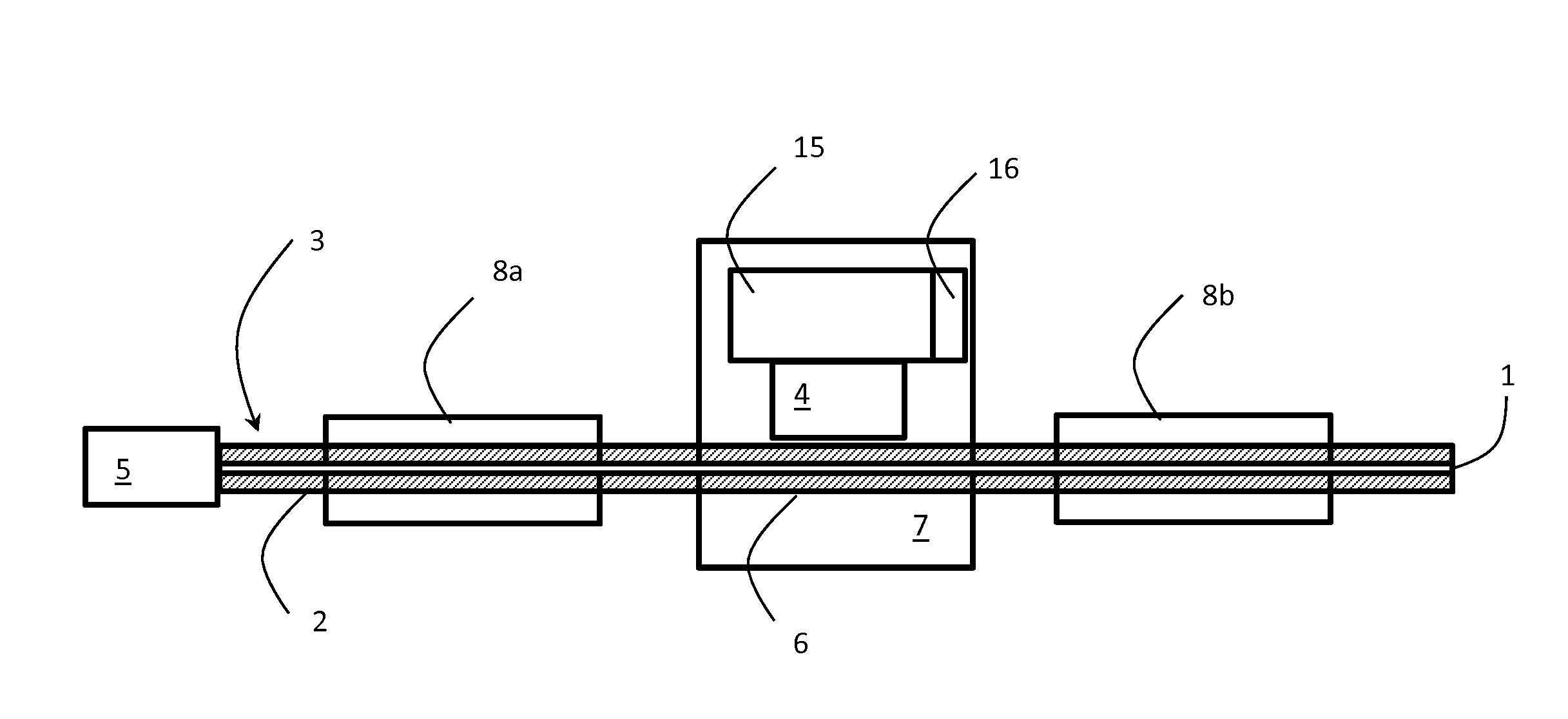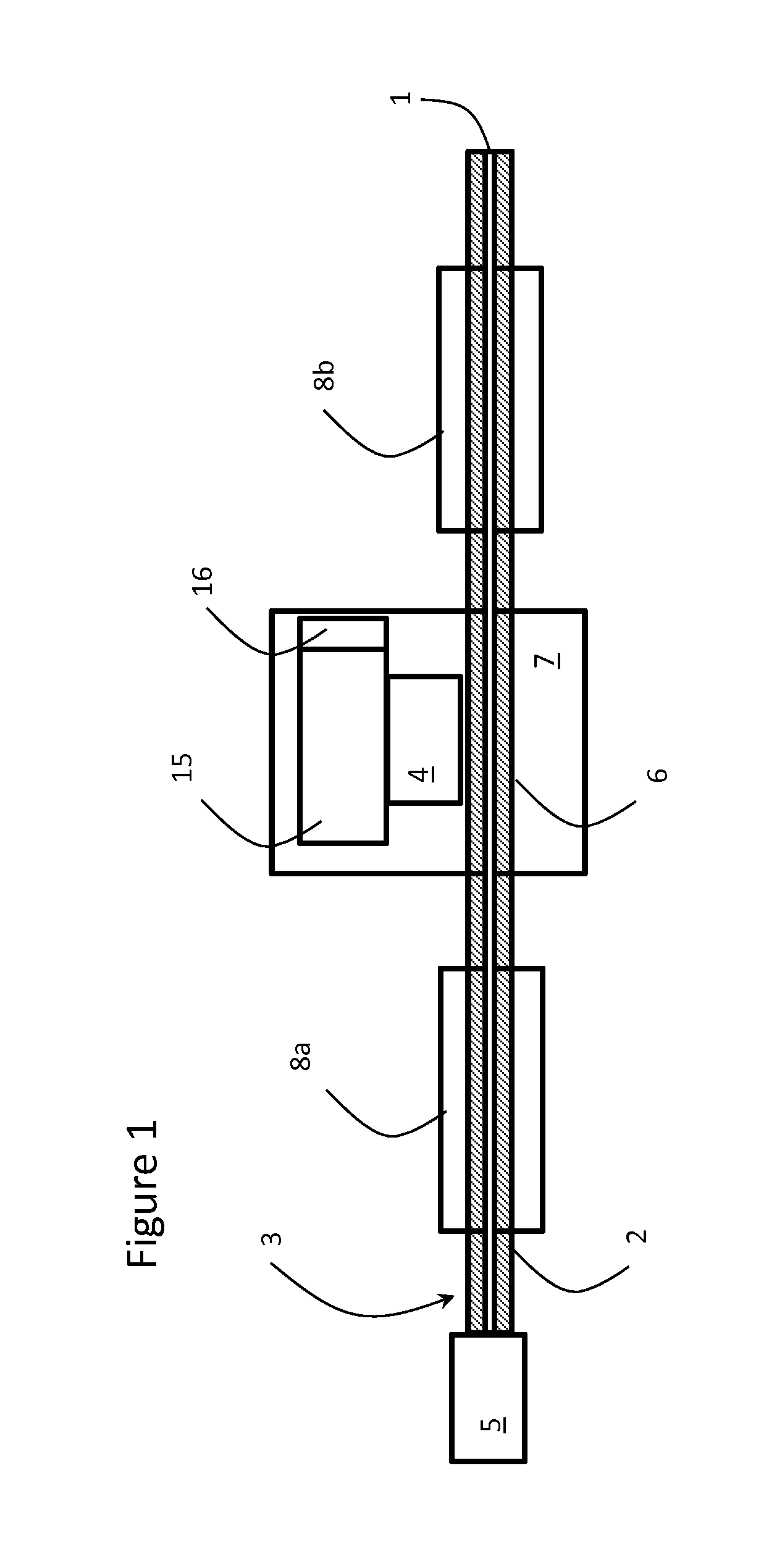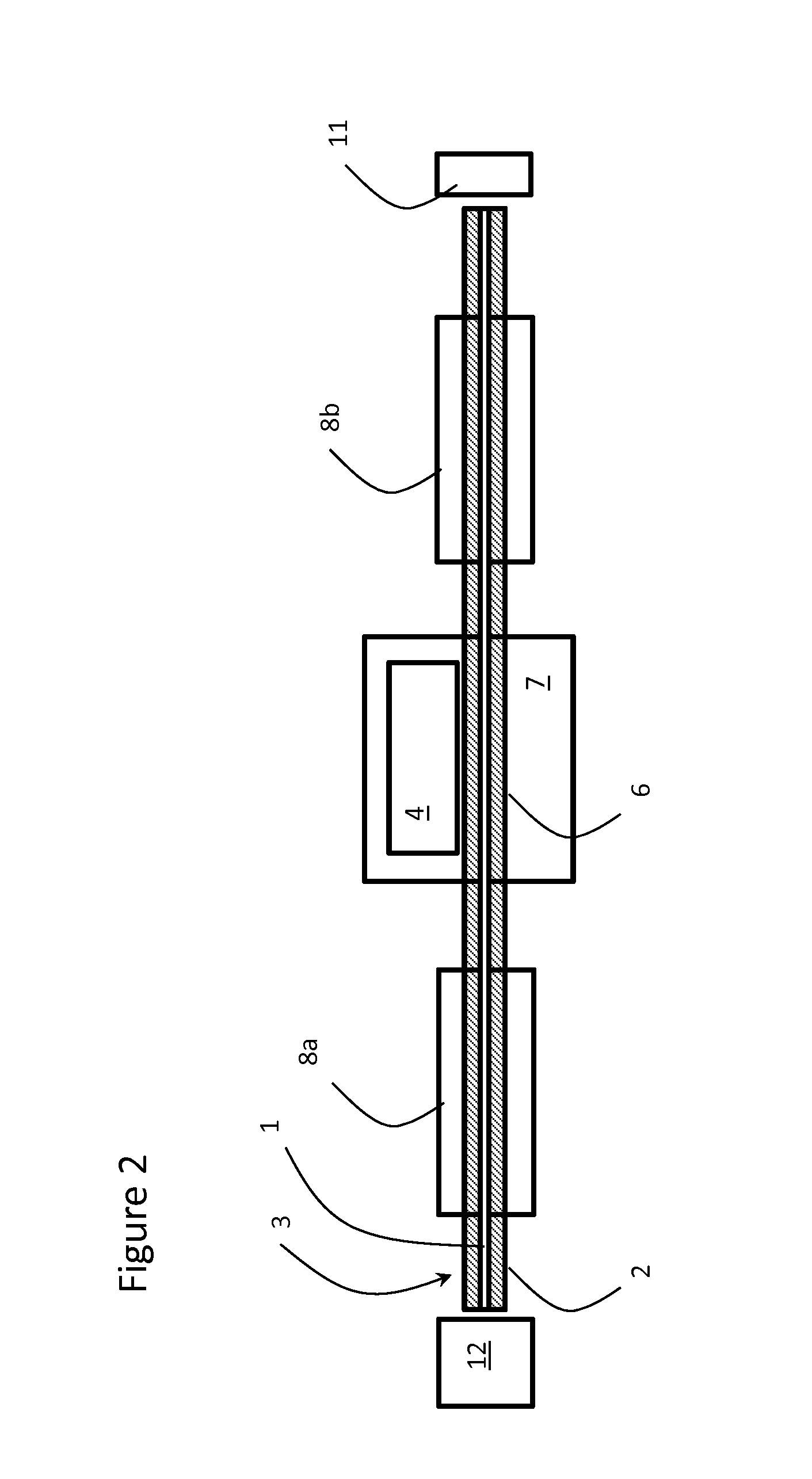Power monitor for optical fiber using background scattering
a technology of optical fiber and background scattering, applied in the field of optical power monitors, can solve the problems of high cost of power measuring equipment, limited fiber optical system, and inability to match the sampling ratio across all transversal modes of the fiber
- Summary
- Abstract
- Description
- Claims
- Application Information
AI Technical Summary
Benefits of technology
Problems solved by technology
Method used
Image
Examples
Embodiment Construction
[0018]The method of measuring optical power in the core of an optical fiber in accordance with the present invention utilizes the intrinsic property of background scattering loss of an optical fiber. Background loss of a typical passive fiber core is in the range 0.1 dB / km to 10 dB / km, and the background loss level depends on the fiber manufacturing process and the operating wavelength. 0.1 dB / km loss corresponds to 2.3×10-8 / mm loss and 10 dB / km loss corresponds to 2.3×10-6 / mm loss. Several factors contribute to the background loss of the fiber and the primary ones are the absorption from impurities and Rayleigh scattering. Rayleigh scattering scatters a small fraction of optical power out of the fiber from the core. The coefficient of Rayleigh scattering is insensitive to the transversal modes and does not vary in majority of the operating conditions. Thus, the intensity of Rayleigh scattered light from the fiber core is directly proportional to the optical power propagating inside...
PUM
 Login to View More
Login to View More Abstract
Description
Claims
Application Information
 Login to View More
Login to View More - R&D
- Intellectual Property
- Life Sciences
- Materials
- Tech Scout
- Unparalleled Data Quality
- Higher Quality Content
- 60% Fewer Hallucinations
Browse by: Latest US Patents, China's latest patents, Technical Efficacy Thesaurus, Application Domain, Technology Topic, Popular Technical Reports.
© 2025 PatSnap. All rights reserved.Legal|Privacy policy|Modern Slavery Act Transparency Statement|Sitemap|About US| Contact US: help@patsnap.com



